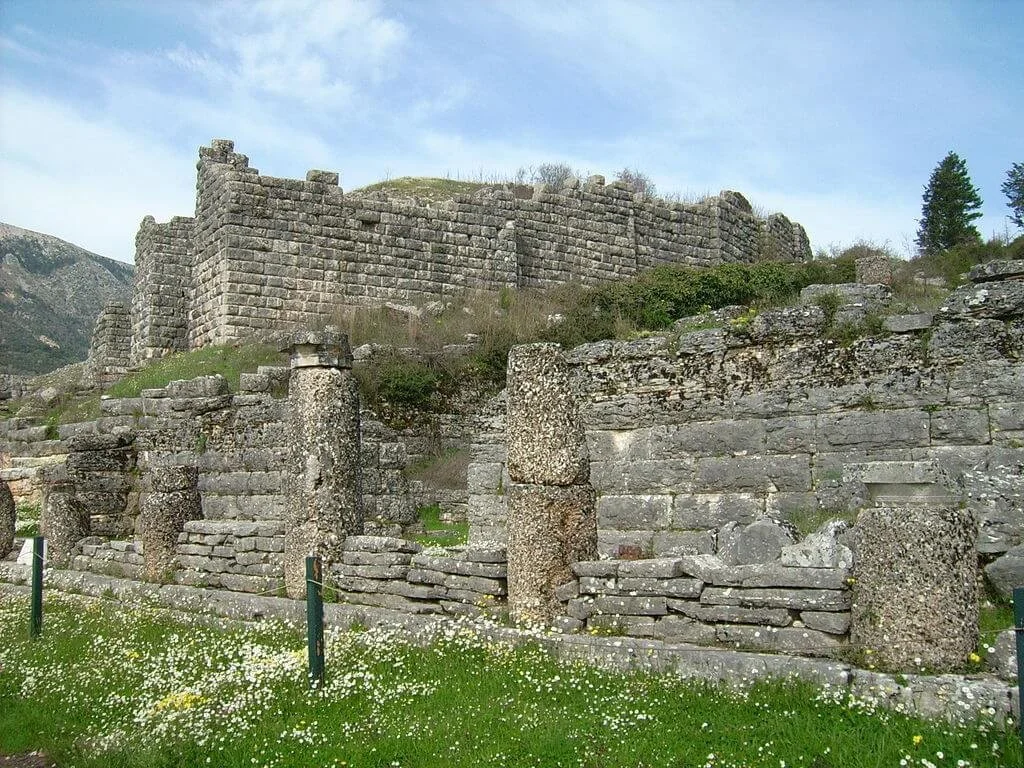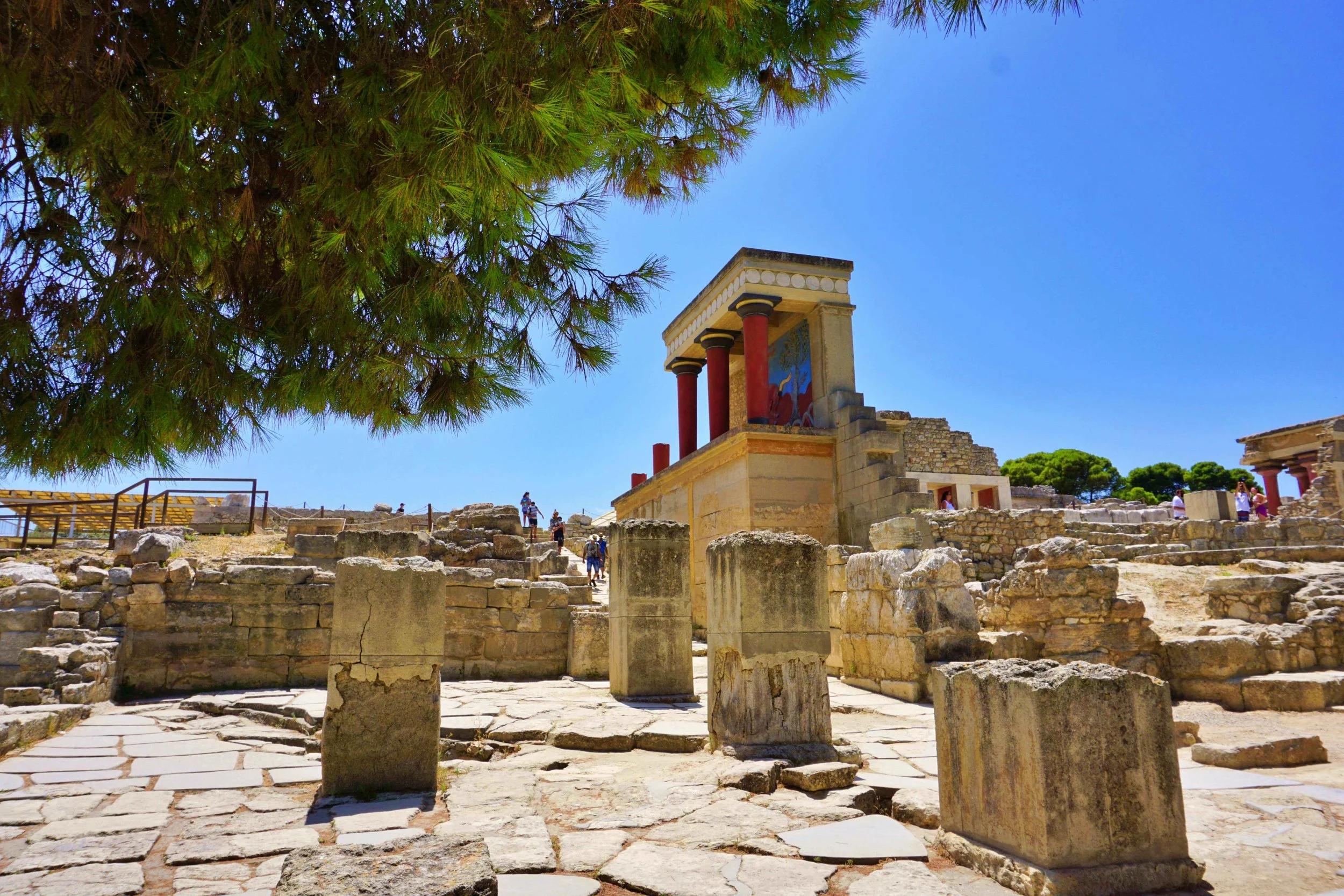Hidden in the quiet corners of the world are places where the past still whispers—sites that seem torn from the pages of a legend. Yet in this case, the magic of the landscape was overshadowed, its timeless aura pressed beneath the iron discipline and polished boots of Nazi Germany.
In the gentle but geologically rich landscape of Poland’s Opole region, there lies what was once considered "white gold": Triassic limestone, a geological treasure created some 252 to 201 million years ago. Local quarries extracted this limestone for generations due to its versatile applications—from building materials to agricultural uses. Its nickname, “white gold,” hints at its economic value, but beneath that sheen lies a darker, more enigmatic chapter.1
One such chapter plays out on the slope of Stone Mountain (Kamienna Góra), near the modest village of Ligota Dolna, where a long-abandoned lime kiln still stands (Wapiennik Ikar). Though it ceased functioning in 1994, the structure remains a ghostly silhouette against the sky—a monument to far more than industrial history.
Icarus Reimagined—From Myth to Propaganda
Embedded upon one wall of that kiln is a peculiar bas-relief: a rendition of Icarus, that tragic Greek figure who soared too close to the sun and plummeted into the sea. Yet this version isn’t about hubris or the tragic consequences of over-ambition; it’s been hijacked and transformed. Surrounding Icarus is the emblem of the National Socialist Flyers Corps, or NSFK—a paramilitary Nazi aviation group. Though the swastika that once accompanied it has since been deliberately removed, telltale metal hooks and faint traces remain, ghosts of symbols erased from sight but not memory.
That uneasy combination—a subject drawn from ancient Greek myth, turned into a Nazi logo, carved into a limestone kiln—captures a surreal collision of epochs: Mesozoic geology, Hellenic mythology, and totalitarian propaganda. All layered upon one weathered wall.
The NSFK, Gliding Training, and Count Sierstorpff’s Legacy
The larger context of this emblem’s presence becomes clearer once you examine Ligota Dolna’s aviation history. In the mid-1920s, the region’s noble—Count Sierstorpff of Żyrowa—established a glider training school known as the Segelfliegerheim Oberschlesien. Pilots learned to navigate the skies using only gliders, well before the Second World War.
By the 1930s, glider schools were increasingly linked with Nazi paramilitary organizations, including the NSFK, which formed in 1937. Its mission was ostensibly aviation training—but behind the scenes, it served as semi-formal preparation for Luftwaffe service, replete with ideological grooming alongside technical instruction.
In Ligota Dolna, two airstrips existed: an “upper” field, used until 1944, and a “lower” one built later for advanced flight training. Local legend—unsubstantiated by official documents—speaks of a tragic incident: a glider pilot crashing into the kiln’s wall. Whether or not the fatality truly happened as told, in 1938 the kiln was repurposed as a memorial. It became a gladiatorial hybrid: myth of Icarus fused with Nazi symbolism, engraved with the date 1938, a cross, and the initials “SM.” The tragedy—real or symbolic—was immortalized in stone.
A Calculated Mythologizing of Greek Antiquity
What we witness here is more than local lore; it’s emblematic of a broader Nazi pattern: the appropriation of Hellenic and classical motifs to legitimize their ideology. The Third Reich courted imagery drawn from antiquity—heroic figures, mythic ideals, classical architecture—to suggest alignment with supposed Aryan inheritance.
Icarus, traditionally a cautionary tale—even a rebuke of overreaching ambition—was reshaped. In the Nazi appropriation, Icarus becomes youthful hero, valiant flyer, aspirant to transcendence, devoid of moral lesson. Rather than warning against overreaching, the symbol encouraged it—an aestheticized hubris that fit neatly within the militaristic glorification of youthful risk, sacrifice, and the conquest of physical and ideological boundaries.
Thus, the kiln becomes not just a local memorial, but a stage upon which myth and propaganda collide, anchored in stone and history.
1939: Bombers, Blood, and the Opening Shots of War
If the kiln anchored myth in stone, the nearby airfields were the real launching pads of modern tragedy. On September 1, 1939, dive bombers—likely Junkers Ju 87 Stukas—took off from this very airfield and struck the nearby town of Wieluń. That bombing preceded even the famed cannon shot fired at the Polish garrison in Westerplatte. In other words: the war, at least in terms of aerial destruction, began here, before most textbooks point to any official military engagement.
The narrative of the war’s "beginning" becomes distilled and condensed in the public imagination, yet here lies a reminder: history is messier, blurrier, and far more human. This neglected kiln and faint Icarus remind us that monumental shifts of history can trace their origins to obscure places.
Limestone, Memory, and the Weight of History
There is something poetic, almost cruel, in the ironic nature of this site. A kiln meant to produce lime—turning something ancient into building material, mortar, fertilizer—becomes a memorial to ideological ambition. The geological past is suspended alongside myth, propaganda, and memory.
The swastika may have been removed, but is that erasure a triumph or an evasion? The kiln stands in near-silence, its relief worn, the initials fading, and the swastika gone. Yet, hooks still remain—silent witnesses to what was. And that presence, though subdued, insists that we remember.
The kiln was closed in 1994, rather late in the context of Eastern Europe’s post-Cold War transformations. Since then, the site has dwelled in neglect, overseen by time, vegetation, and quiet erosion. Today, few visitors make the pilgrimage—yet for those who do, the place evokes a dense layering of time: from the Triassic seas to Greek myth, from interwar glider flights to Nazi memorialization, and finally to the present, where memory and decay intersect.
Reflecting on Ideology, Heritage, and the Past
This kiln is not just a historical oddity. It is a poignant reminder of how the past gets weaponized: how myth can be co-opted, how geology and industry can become a backdrop for ideological spectacle, how symbols can be stripped down, reshaped, and re-deployed.
We must ask ourselves: what does it mean when a culture’s mythic heritage is commandeered to serve a radical ideology? And what does it tell us about our own times, when symbols are contested, repurposed, or erased?
The limestone, in its geological silence, outlives human stories. Icarus falls again and again, but the rock endures. The Swastika may vanish, but the hooks remain. The airfield may lie reclaimed by grasses, but the memory of those first bombs lingers in the air.
VIII. Conclusion: Poetry and Politics in Stone
What remains, ultimately, is layered. The kiln is more than limestone; it is an archaeological artifact of ideology. It asks us to peer into silence and to hear echoes: of myth, supremacism, ambition, tragedy—even forgotten accidents or rumors.
The Nazi Limestone Icarus of Poland invites us to pause, and wonder: who gets to write myth? Who is allowed to soar, and whose wings are melted by politics? The kiln cries out softly—and that voice, though ancient and weathered, is vital.




















































































